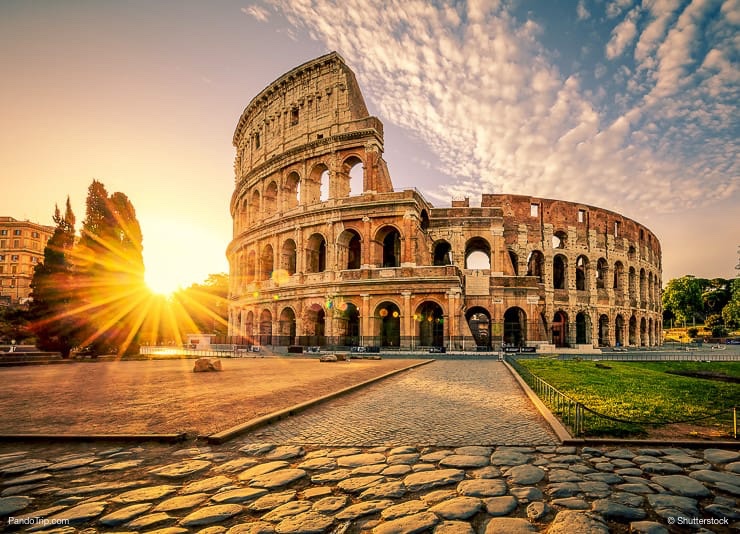History behind iconic landmarks in the world
When we think of iconic landmarks, we often imagine grand structures and historical sites that captivate our imagination. These landmarks are more than just tourist attractions; they are windows into the past, revealing stories of ancient civilizations, pivotal historical events, and cultural evolution. From the majestic pyramids of Egypt to the intricate temples of Asia, each landmark has its own unique narrative that contributes to its global significance.
In this article, we’ll explore the history behind some of the world’s most iconic landmarks. We’ll delve into their origins, the stories they tell, and how they have shaped and reflected the cultures that created them. Whether you’re a history buff, a travel enthusiast, or just curious about the world, this journey through these landmarks will offer you a deeper understanding of their historical context and cultural impact.
Table of Contents
ToggleThe Great Pyramids of Giza, Egypt
Ancient Engineering Marvels
The Great Pyramids of Giza are perhaps the most recognizable symbols of ancient Egypt. Located on the Giza Plateau, these monumental structures were built during the Fourth Dynasty of the Old Kingdom, around 2580–2560 BCE. The three main pyramids—Khufu (also known as Cheops), Khafre, and Menkaure—were constructed as tombs for the pharaohs and are renowned for their precise engineering and grandeur.
Khufu’s Pyramid, the largest of the three, originally stood at 146.6 meters (481 feet) but now reaches 138.5 meters (454.4 feet) due to the loss of the outer casing stones. It held the title of the tallest man-made structure in the world for more than 3,800 years. The construction of these pyramids involved advanced mathematical and engineering skills. Despite centuries of study, some of the methods used to transport and place the massive stones remain a subject of debate among historians and archaeologists.
Khafre’s Pyramid, slightly smaller than Khufu’s, retains some of its original casing stones at the top, giving us a glimpse of what the pyramids originally looked like. Adjacent to it stands the Great Sphinx of Giza, a massive limestone statue featuring the body of a lion and the head of a pharaoh, widely thought to represent Khafre himself.
Menkaure’s Pyramid, the smallest of the three, still showcases the intricacies of pyramid construction and the art of the time. The Great Pyramids are not only marvels of ancient engineering but also a testament to the Egyptians’ religious beliefs and their view of the afterlife.
The Colosseum, Rome, Italy
A Glimpse into Ancient Rome’s Entertainment
The Colosseum, or the Flavian Amphitheatre, stands as a symbol of the grandeur and complexity of ancient Rome. Construction began in 72 CE under Emperor Vespasian of the Flavian dynasty and was completed in 80 CE by his successor and heir, Titus. This iconic structure could hold up to 80,000 spectators, making it one of the largest amphitheaters ever built.
The Colosseum was primarily used for gladiatorial contests and public spectacles such as animal hunts, mock sea battles, and executions. The engineering of the Colosseum was groundbreaking for its time, featuring a complex system of vaults and arches that provided structural support and allowed for rapid crowd movement.
One of the most notable aspects of the Colosseum is its use of the hypogeum, an elaborate underground network of tunnels and chambers where gladiators and animals were held before their appearances in the arena. The Colosseum’s influence extends beyond architecture; it has become a symbol of the Roman Empire’s power and the darker aspects of its society.
The Great Wall of China
The Epic Barrier of Ancient China
Stretching over 13,000 miles, the Great Wall of China is one of the most ambitious construction projects in human history. The wall was built over several dynasties, with the most famous sections constructed during the Ming Dynasty (1368–1644). It was originally built to protect Chinese states from invasions by nomadic tribes from the north, such as the Mongols and Xiongnu.
The Great Wall isn’t a single, continuous barrier but an intricate system of walls, fortifications, and watchtowers. Its construction involved millions of laborers and took several centuries to complete. The wall’s design and construction methods varied depending on the terrain and the materials available. In some areas, it was built with tamped earth, while in others, it was made from bricks and stone.
The wall’s historical significance extends beyond its military purpose; it represents the determination and resourcefulness of the Chinese people. Today, it stands as a UNESCO World Heritage Site and a powerful symbol of China’s historical and cultural heritage.
The Taj Mahal, India
Mughal’s Symbol of Love
The Taj Mahal is not just a marvel of Mughal architecture but also a poignant symbol of love. Built by Emperor Shah Jahan in memory of his beloved wife Mumtaz Mahal, who died during childbirth in 1631, the Taj Mahal is an exquisite example of Mughal architectural brilliance. Some people speculate that the Taj Mahal was originally a Hindu temple dedicated to Shiva, known as the Tejo Mahal, and that the Mughal Empire later converted it into the Taj Mahal. They are now calling on the government to conduct an archaeological survey, similar to the investigation carried out at the Ram Janmabhoomi site, to examine these claims.
Construction began in 1632 and was largely completed in 1643, though some finishing touches continued for several years. The Taj Mahal is renowned for its white marble dome, which is surrounded by lush gardens, reflective pools, and intricate carvings. The structure combines elements of Islamic, Persian, Ottoman Turkish, and Indian architecture, reflecting the diverse influences of the Mughal Empire.
The intricate inlay work of semi-precious stones and the symmetrical layout of the gardens and mausoleum highlight the craftsmanship of the artisans involved. The Taj Mahal’s history is deeply intertwined with themes of love and loss, making it a powerful cultural and historical landmark.
Machu Picchu, Peru
The Lost City of the Incas
Machu Picchu, often referred to as the “Lost City of the Incas,” is one of the most mysterious and well-preserved archaeological sites in the world. Located high in the Andes Mountains of Peru, it was built by the Inca emperor Pachacuti in the 15th century and later abandoned during the Spanish Conquest in the 16th century.
The site was brought to prominence in 1911 by American historian Hiram Bingham. Its location, at an altitude of about 2,430 meters (7,970 feet), and the precision of its stone construction have intrigued scholars and visitors alike. Machu Picchu is divided into two main areas: the agricultural sector with terraced fields and the urban sector with temples, palaces, and residential buildings.
The exact purpose of Machu Picchu remains uncertain. Some believe it was a royal estate, while others think it may have served as a religious retreat. Its strategic location and advanced engineering, including terracing and hydraulic systems, reflect the Incas’ ingenuity and their deep understanding of their environment.
The Eiffel Tower, Paris, France
The Iron Lady of Paris
The Eiffel Tower, completed in 1889 for the Exposition Universelle (World’s Fair) held to celebrate the 100th anniversary of the French Revolution, is one of the most recognizable landmarks in the world. Designed by engineer Gustave Eiffel, the tower stands at 324 meters (1,063 feet) and was initially criticized by some of Paris’s leading artists and intellectuals for its design.
Despite the initial backlash, the Eiffel Tower quickly became a beloved symbol of modernity and artistic innovation. It held the title of the world’s tallest man-made structure until the Chrysler Building in New York was completed in 1930.The tower’s iron lattice structure was groundbreaking at the time and has since become a global icon of architectural and engineering achievement.
Today, the Eiffel Tower attracts millions of visitors each year and serves as a symbol of Parisian elegance and French cultural pride. Its history is a testament to the transformative power of industrial design and the importance of embracing new technologies.
Discover Bali’s Serene Beauty | Maya (mayathevoice.com)
The Statue of Liberty, New York City, USA
A Gift of Freedom and Democracy
The Statue of Liberty, a gift from France to the United States in 1886, stands as a symbol of freedom, democracy, and the enduring friendship between the two nations. Designed by French sculptor Frédéric Auguste Bartholdi and engineered by Gustave Eiffel, the statue was intended to commemorate the centennial of the American Declaration of Independence and to Celebrate the partnership between France and the United States.
Standing at 93 meters (305 feet) from the base to the tip of the torch, the statue represents Libertas, the Roman goddess of freedom. Her torch, held high, symbolizes enlightenment and the path to liberty. The statue’s arrival in New York Harbor was met with great enthusiasm, and it quickly became a welcoming symbol for immigrants arriving in America.
The Statue of Liberty underwent significant restoration in the 1980s and continues to be a powerful symbol of American values and ideals. Its history reflects the ideals of democracy and freedom that have shaped the nation’s identity.
Top Ten Best Cities To Live In The World | Maya (mayathevoice.com)
Conclusion
Iconic landmarks around the world are not just architectural feats but are deeply embedded with historical significance and cultural meaning. Each of these landmarks tells a story of the people who built them, the civilizations they represented, and the enduring legacy they have left behind. Understanding the history behind these structures allows us to appreciate their beauty and significance on a deeper level, connecting us to the rich collages of human history and cultural heritage.
Whether you’re planning a visit or simply intrigued by their stories, these landmarks offer a fascinating glimpse into the past and remind us of the diverse and complex histories that have shaped our world.



